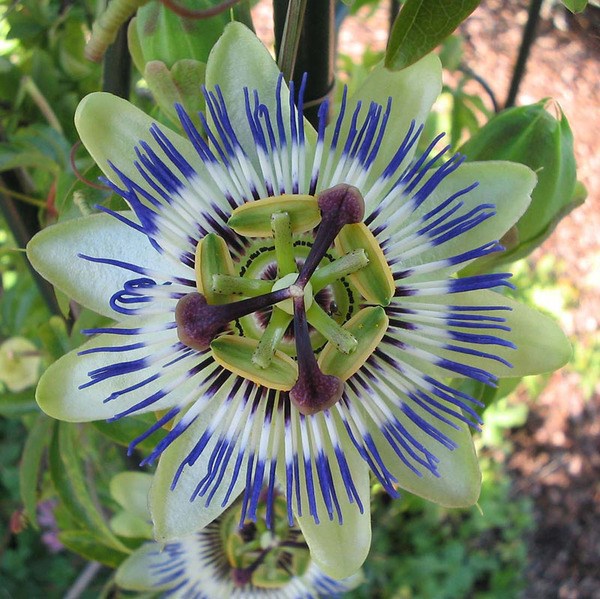A few years ago, people started putting tropical (or tropical looking) plants in their gardens. Far from dying down, this trend continues to gain momentum and all the chic and stylish gardeners - even on the prairies - are riding the wave.
Hibiscus, oleander, castor beans, plumbago and citrus trees are all making their way onto prairie patios and decks. Depending on what kind of a summer we have, the results can be thrilling or underwhelming. Among the most determined of gardeners, prairie people have not let our harsh climate and short season slow them down. More and more often, I'm being asked about the use of tropicals as seasonal interest plants or how to over winter them properly indoors.
One of the most exciting groups of tropical plants is the passionflower (Passiflora). These are appearing with surprising regularity at your local garden centers. One of the most diverse groups of herbaceous plants in the world, they have an exciting history to go along with their exotic and other worldly flowers. Have you ever been to Ikea? You purchase a bookshelf or a table or some sort of high-end coat rack and it comes in a box and you go home to assemble it yourself. A passionflower looks rather like someone went to Ikea, purchased a variety of floral parts, and took them home and assembled them into a blossom as best as they could. There is nothing else like them on Earth. They would not have been out of place in the film Avatar and having one in your garden is magical. There is no other word for it.
Growing passionflowers in a prairie garden is a challenge, but certainly not something out of reach. I first started growing passionflowers when I was a teenager, and though I killed quite a number of them, I eventually figured out how I could make them (reasonably) happy. The first time one flowered for me I was 18 and was fairly sure that I had just accomplished something outside the realm of possibility. It was one of the most empowering gardening experiences I ever had. Since that time, I have grown many of them. Some were easy and rewarding, others were challenging and difficult. All have added interest to my gardening journey.
They grow extremely quickly, and in the right setting, they can produce their stunning flowers all summer long. They come in white, red, yellow, blue, violet, purple, pink and rose. Some are easier to grow than others; many can be over wintered indoors fairly easily; and a few are richly scented. Getting them to produce fruit (yes, the famous passion fruit) is not something you should count on, but it's not quite impossible either. It's an easy group of plants to fall in love with. Having a passionflower in bloom in a prairie garden is like finding a diamond while digging your carrots.
Keeping a passionflower happy and flowering madly you'll need to feed and water them well. Plant them in well-draining potting media. Because they are tropical, they basically need to think they're in South America: a sheltered, sunny spot protected from the wind and cold suits them best. Also, as vines,provide support for them to wrap their tendrils around and climb up and over!
I have seen passionflowers naturalized in Hawaii, and when I lived in Australia I pulled them out of my garden as weeds. I never fail to be astounded and perplexed by these gorgeous and extremely distinctive plants.
[Lyndon Penner, author of The Prairie Short Season Yard, will be teaching an especially smashing introduction to passionflowers at the University of Saskatchewan Hort week, July 5-11. http://ccde.usask.ca/gardening/hortweek, 306-966-5546 or [email protected] for more information on courses and registration.]
Have a gardening question? Contact GardenLine, 306-966-5865 or [email protected]
- This column is provided courtesy of the Saskatchewan Perennial Society (www.saskperennial.ca; [email protected]). Check out our Bulletin Board or Calendar for upcoming horticulture events. Labour&Learn at the Forestry Farm; garden tour July 13.




